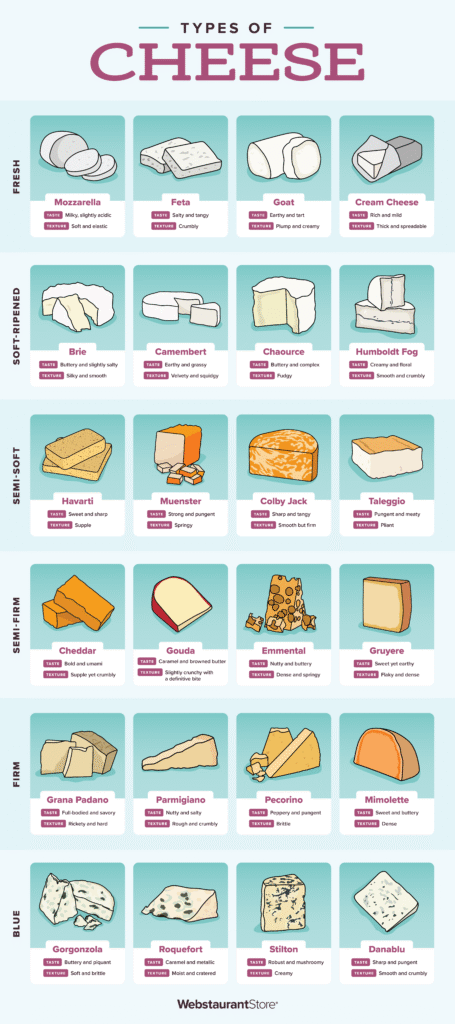
The world of cheese is vast and diverse, offering a spectrum of flavors to tantalize every palate. Among the many descriptors used to characterize cheese, “sharp” stands out as a term that evokes both intrigue and anticipation. What does sharp mean in cheese? It signifies a distinct flavor profile characterized by intensity, tanginess, and sometimes even a hint of pungency. This article delves into the fascinating world of sharp cheese, exploring its unique characteristics, the aging process that contributes to its development, and some popular examples of this bold and flavorful category.
This exploration will begin with a detailed look at the essence of what does sharp mean in cheese, examining the sensory experience it evokes. We’ll then journey into the intricate world of cheesemaking, uncovering how the aging process transforms mild cheeses into those with pronounced sharpness. Finally, we’ll highlight some notable types of sharp cheeses, showcasing their distinct characteristics and culinary applications.
Understanding Sharp Cheese Flavor
What does sharp mean in cheese? It’s more than just a simple descriptor; it encapsulates a complex interplay of taste sensations. Sharp cheese typically exhibits a pronounced tanginess, often described as acidic or sour, which arises from the breakdown of lactose (milk sugar) during aging. This tanginess is balanced by savory notes, adding depth and complexity to the overall flavor profile.
Sharpness can also manifest as a certain “bite” or intensity on the palate, leaving a lingering sensation that lingers even after swallowing. Some sharp cheeses possess a subtle hint of bitterness, further enriching their flavor profile. The level of sharpness varies greatly depending on the cheese variety, aging time, and specific production methods.
The Aging Process and Sharpness Development
The transformation of mild cheese into its sharp counterpart is a fascinating process driven by time and microbial activity. During aging, enzymes naturally present in the cheese or introduced by cultures break down proteins and fats, creating a cascade of chemical reactions that ultimately contribute to flavor development.
As cheese ages, these enzymatic processes intensify, leading to the breakdown of lactose into lactic acid, which contributes to the characteristic tanginess of sharp cheeses. Simultaneously, other compounds are formed, adding layers of complexity to the flavor profile. The longer the aging process, the more pronounced the sharpness becomes.
Factors Influencing Sharpness
Several factors influence the level of sharpness achieved in a particular cheese:
- Temperature: Optimal aging temperatures vary depending on the cheese type but generally fall within a range that promotes microbial activity without causing spoilage.
- Humidity: Maintaining appropriate humidity levels is crucial to prevent moisture loss and ensure even flavor development throughout the cheese.
- Microbial Activity: The specific types of bacteria and molds present during aging play a significant role in shaping the flavor profile, including sharpness.
Types of Sharp Cheeses
The world of sharp cheeses offers a delightful array of options to explore, each with its unique characteristics and culinary applications.
Sharp Cheddar Cheese
Sharp cheddar is a classic example of a cheese that truly shines when aged. Its characteristic nutty and buttery flavors intensify during the aging process, culminating in a sharp, tangy bite. Sharp cheddar is incredibly versatile, lending itself to sandwiches, salads, grilled cheese, and even snacking on its own.
Sharp Parmesan Cheese
Parmesan, known for its granular texture and intense savory flavor, reaches new heights of deliciousness when aged to sharpness. Its nutty and slightly salty notes become more pronounced, creating a complex and satisfying taste experience. Sharp parmesan is prized for its ability to elevate pasta dishes, soups, salads, and even pizzas with its umami-rich depth.
Conclusion
The world of sharp cheese offers a captivating journey for the senses, revealing a spectrum of flavors that range from tangy to pungent and everything in between. Understanding what does sharp mean in cheese unlocks a deeper appreciation for the intricate processes involved in cheesemaking and the artistry behind crafting these bold and flavorful creations. Whether you’re a seasoned cheese aficionado or simply exploring new culinary horizons, venturing into the realm of sharp cheeses promises a rewarding experience that will tantalize your taste buds and expand your palate.
